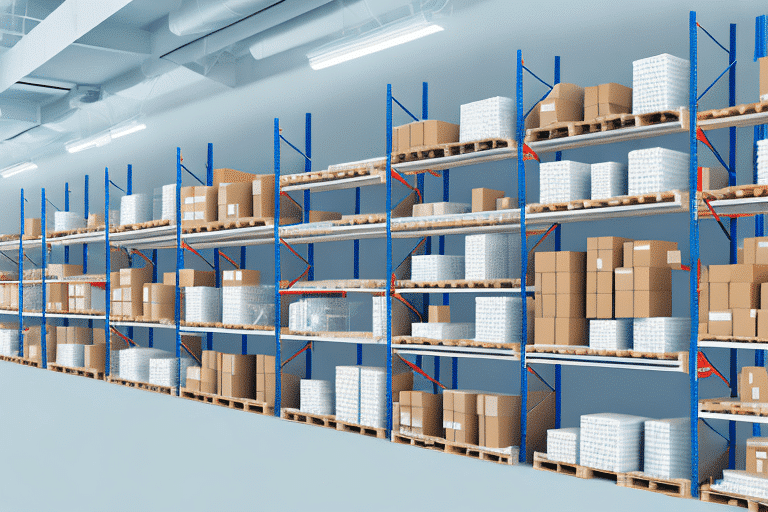A Comprehensive Guide to Choosing the Right SaaS WMS for Your Business
In today's fast-paced business environment, implementing a Warehouse Management System (WMS) is essential for streamlining operations and maximizing productivity. However, with numerous options available in the market, selecting the right SaaS WMS can be a daunting task. This guide provides detailed insights to help you navigate the selection process and make an informed decision for your business.
Introduction to SaaS WMS
A Warehouse Management System (WMS) is a software application that facilitates inventory control and warehouse management by overseeing tasks such as receiving, putaway, picking, packing, and shipping. Software as a Service (SaaS) is a cloud-based delivery model that offers businesses access to WMS functionalities via the internet, eliminating the need for expensive on-premise hardware and software.
One of the key benefits of using a SaaS WMS is its scalability. Unlike traditional on-premise solutions that require significant investments to scale, SaaS WMS allows businesses to adjust their usage based on current needs quickly. This flexibility is particularly valuable in industries with fluctuating inventory levels.
Benefits of SaaS WMS for Your Business
Cost Efficiency
SaaS WMS typically operates on a subscription-based model, which reduces upfront costs associated with purchasing hardware and software licenses. According to Gartner, the global public cloud services market is expected to grow by 23% in 2023, highlighting the increasing adoption of cloud-based solutions like SaaS WMS.
Real-Time Data and Analytics
SaaS WMS provides real-time visibility into inventory levels, supply chain operations, and warehouse performance. This immediate access to data enables businesses to make informed decisions, optimize operations, and respond swiftly to market changes.
Customization and Flexibility
Modern SaaS WMS solutions offer a range of customizable features that can be tailored to meet specific business needs. Whether it's custom workflows, reporting dashboards, or integration capabilities, businesses can modify the system to align with their unique processes.
Key Factors to Consider When Choosing a SaaS WMS
Functionality and Features
Assess the core functionalities of the SaaS WMS, including inventory management, order processing, shipping, and receiving. Ensure that the system supports advanced features like automated picking, barcode scanning, and real-time tracking.
Scalability
Consider whether the WMS can scale with your business growth. The system should handle increasing volumes of inventory and transactions without compromising performance.
Integration Capabilities
Evaluate the WMS's ability to integrate seamlessly with other critical business applications such as Enterprise Resource Planning (ERP) systems and Transportation Management Systems (TMS). Effective integration ensures streamlined operations and data consistency across platforms.
Security and Data Privacy
Ensure that the SaaS WMS complies with industry-standard security protocols and data privacy regulations such as GDPR and HIPAA. Look for features like data encryption, secure access controls, and regular security audits.
Vendor Reputation and Support
Research the vendor’s track record in terms of reliability, customer support, and service quality. Opt for vendors with positive reviews and a history of supporting businesses similar to yours.
Assessing Your Business Needs
Inventory and Order Management
Analyze your current inventory levels, SKU variety, and order volumes. Understanding these aspects will help determine the necessary features and scalability of the WMS.
Operational Processes
Map out your warehouse operations, including receiving, storage, picking, packing, and shipping. Identifying inefficiencies and areas for improvement can guide your selection of a WMS that addresses specific operational challenges.
Customization Requirements
Determine the extent to which you need to customize the WMS. Businesses with unique workflows may require more flexible solutions that allow for extensive customization.
Evaluating Features and Functionality
Automation Capabilities
Automated processes such as picking, packing, and inventory tracking can significantly enhance efficiency. Evaluate the level of automation offered by the SaaS WMS and its impact on your operations.
Reporting and Analytics
Robust reporting tools and analytics capabilities are crucial for monitoring performance and making data-driven decisions. Ensure the WMS provides comprehensive reports and customizable dashboards.
User Experience
A user-friendly interface reduces the learning curve and enhances productivity. Assess the system’s usability and the ease with which your team can navigate and utilize its features.
Understanding Pricing Models for SaaS WMS
Subscription Fees
SaaS WMS providers typically charge a recurring monthly or annual subscription fee. This fee often covers software updates, maintenance, and support services.
Usage-Based Pricing
Some vendors offer pricing based on usage metrics such as the number of transactions, users, or the volume of inventory managed. This model can be cost-effective for businesses with variable usage patterns.
Total Cost of Ownership
Beyond subscription fees, consider additional costs such as implementation, training, and ongoing support. Evaluating the total cost of ownership ensures that the solution fits within your budget and offers a good return on investment.
Comparing Top SaaS WMS Vendors
Vendor Reputation and Reliability
Choose vendors with a strong reputation for reliability and customer satisfaction. Reviews and case studies can provide insights into the vendor’s performance and support quality.
Customization and Flexibility
Assess the extent to which each vendor allows for customization to meet your specific business needs. Flexibility in configuring workflows, reports, and integrations is essential for tailoring the WMS to your operations.
Support and Training
Effective customer support and comprehensive training programs are critical for successful WMS implementation and ongoing usage. Evaluate the support options and training resources offered by each vendor.
Security and Data Privacy Considerations
Data Protection Measures
Ensure that the SaaS WMS employs robust data protection measures, including encryption, secure access controls, and regular security audits. Protecting sensitive business data is paramount.
Compliance with Regulations
The WMS should comply with relevant data privacy regulations such as GDPR, HIPAA, and PCI DSS. Compliance ensures that your business adheres to legal standards and protects customer information.
Disaster Recovery and Data Backup
Verify that the vendor has a comprehensive disaster recovery plan and regular data backup procedures. This ensures data integrity and availability in case of unforeseen events or system failures.
Future Trends in SaaS WMS Technology
Integration of Artificial Intelligence and Machine Learning
AI and ML are transforming WMS by enabling predictive analytics, optimizing inventory management, and automating complex tasks. These technologies enhance decision-making and operational efficiency.
Internet of Things (IoT) Integration
IoT devices such as sensors and RFID tags provide real-time data on inventory movements and environmental conditions. Integrating IoT with SaaS WMS offers enhanced visibility and control over warehouse operations.
Blockchain for Enhanced Transparency
Blockchain technology offers a secure and transparent method for tracking inventory movements and transactions. This reduces the risk of fraud and errors, providing accurate and trustworthy data.
Use of Drones and Robotics
Drones and robots are increasingly being used for inventory tracking, picking, and packing. These technologies help reduce labor costs, improve accuracy, and increase the speed of warehouse operations.
Conclusion
Selecting the right SaaS WMS is critical for optimizing warehouse management processes and enhancing overall business efficiency. By evaluating your business needs, understanding key features and functionalities, assessing vendor options, and considering future technological trends, you can choose a WMS that not only meets your current requirements but also supports your business's growth and adaptability.
For a successful implementation, develop a detailed plan covering data migration, testing, training, and go-live strategies. Engage with qualified implementation partners and ensure ongoing support to maximize the benefits of your SaaS WMS investment.
As technology continues to evolve, staying informed about the latest advancements in SaaS WMS will enable your business to maintain a competitive edge and achieve long-term success.






















